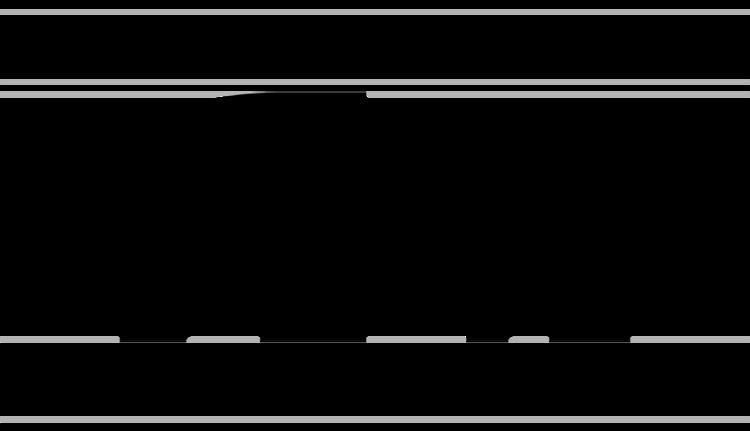 | ||
Ya (Я я; italics: Я я) is a letter of the Cyrillic script, the civil script variant of Old Cyrillic Little Yus (Ѧ ѧ). Among modern Slavonic languages, it is used in East Slavic and Bulgarian languages. It is also used in the Cyrillic alphabets used by Mongolian and many Uralic, Caucasian and Turkic languages of the former Soviet Union.
Contents
Pronunciation
It is a so-called iotated vowel and typically sounds as /ja/ in initial or post-vocalic position, something between English pronunciations of ⟨ya⟩ in 'yard' and 'yack'.
When ⟨я⟩ follows a soft consonant, no /j/ sound occurs between the consonant and the vowel.
Exact pronunciation of the vowel sound of ⟨я⟩ depends also on the succeeding sound due to allophony in Slavic languages. Before a soft consonant it is [æ], the near-open front unrounded vowel – like in 'bat'. If a hard consonant follows ⟨я⟩, or none, then the result is an open vowel, usually [a] – like in French 'la'.
In non-stressed positions the reduction depends on language and dialect. The standard Russian language reduces this vowel to [ɪ], but in yakanye dialects ⟨я⟩ does not reduce at all, although other instances of the /a/ phoneme (represented with the letter ⟨а⟩) do reduce.
In Bulgarian the vowel sound is reduced to /ɐ/ in unstressed syllables, and is pronounced /ɤ̞/ in stressed verb and definite article endings.
History
The letter ѧ, known as little jus (Bulgarian: малък юс, Russian: юс малый) originally stood for a front nasal vowel, conventionally transcribed as ę. The history of the letter (in both Church Slavonic and vernacular texts) varies according to the development of this sound in the different areas where Cyrillic was used.
In Serbia, [ę] became [e] at a very early period and the letter ѧ ceased to be used, being replaced by e. In Bulgaria the situation is complicated by the fact that dialects differ and that there were different orthographic systems in use, but broadly speaking [ę] became [e] in most positions, but in some circumstances it merged with [ǫ], particularly in inflexional endings, e.g. the third person plural ending of the present tense of certain verbs such as правѧтъ (Modern Bulgarian правят). The letter continued to be used, but its distribution, particularly in regard to the other jusy, was governed as much by orthographical convention as by phonetic value or etymology.
Among the Eastern Slavs, [ę] was denasalised, probably to [æ], which palatalised the preceding consonant; after palatalisation became phonemic, the /æ/ phoneme merged with /a/, and ѧ henceforth indicated /a/ after a palatalised consonant, or else, in initial or post-vocalic position, /ja/. However, Cyrillic already had a character with this function, namely ꙗ, so that for the Eastern Slavs these two characters were henceforth equivalent. The alphabet in Meletij Smotrickij's grammar of 1619 accordingly lists "ꙗ и҆лѝ ѧ"; he explains that ꙗ is used initially and ѧ elsewhere. (In fact he also distinguishes the feminine form of the accusative plural of the third person pronoun ѧ҆̀ from the masculine and neuter ꙗ҆̀.) This reflects the practice of earlier scribes and was further codified by the Muscovite printers of the seventeenth century (and is continued in modern Church Slavonic). However, in vernacular and informal writing of the period, the two letters may be used completely indiscriminately.
It was in Russian cursive (skoropis') writing of this time that the letter acquired its modern form: the left-hand leg of ѧ was progressively shortened, eventually disappearing altogether, while the foot of the middle leg shifted towards the left, producing the я shape.
In the specimens of the civil script produced for Peter I, forms of ꙗ, ѧ and я were grouped together; Peter deleted the first two, leaving only я in the modern alphabet, and its use in Russian remains the same to the present day. It was similarly adopted for the standardised orthographies of modern Ukrainian and Belarusian. In nineteenth-century Bulgaria, both Old Cyrillic and civil scripts were used for printing, with я in the latter corresponding to ѧ in the former, and there were various attempts to standardise the orthography, of which some, such as the Plovdiv school exemplified by Nayden Gerov, were more conservative, essentially preserving the Middle Bulgarian distribution of the letter, others attempted to rationalise spelling on more phonetic principles, and one project in 1893 proposed abolishing the letter я altogether. By the early twentieth century, under Russian influence, я came to be used for /ja/ (which is not a reflex of ę in Bulgarian), retaining its use for /jɐ/ but was no longer used for other purposes; this is its function today.
Use in loanwords and transcriptions
In Russian, the letter has little use in loanwords and orthographic transcriptions of foreign words. A notable exception is the use of ⟨ля⟩ Russian pronunciation: [lʲa] to transcribe /la/, mostly from Romance languages, German and Arabic. This makes ⟨л⟩ to match [l] better than its dark l pronunciation in ⟨ла⟩.
Although [æ] is a distinctive pronunciation of ⟨я⟩ in Russian, the letter is almost never used to transcribe that sound, unlike the use of ⟨ю⟩ to approximate close front and central rounded vowels. Nonetheless, ⟨я⟩ is used for Estonian ⟨ä⟩ – for instance, Pärnu is written ⟨Пярну⟩ in Russian, although the Russian pronunciation does not match the original.
Related letters and other similar characters
Computing codes
Unicode provides separate code-points for the Old Cyrillic and civil script forms of this letter. A number of Old Cyrillic fonts developed before the publication of Unicode 5.1 placed Iotified A (Ꙗ/ꙗ) at the code points for Ya (Я/я) instead of the Private Use Area, but since Unicode 5.1, Iotified A has been encoded separately from Ya .
